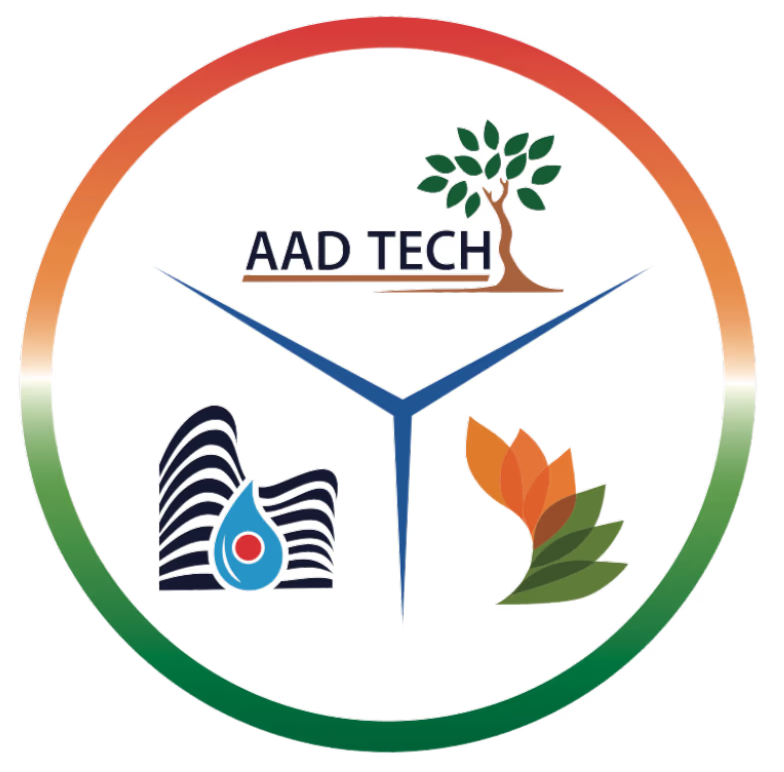Heating, ventilation, and air conditioning (HVAC) systems are among the largest energy consumers in commercial and industrial buildings. If you manage an office building, hospital, hotel, or factory plant, your HVAC system likely makes up a significant portion of your monthly utility statement. But the good news is, strategic improvements to your HVAC system can cut energy costs by enormous proportions without giving up comfort or efficiency.
Most building owners and facility managers stick to old or poorly maintained systems, unaware of the ways that new solutions can make their facilities more efficient. Even minor modifications can pay huge dividends in the long run, companies such as AAD Tech, with extensive experience in HVAC retrofitting and green engineering, have demonstrated.
Here in this blog we will explore the best HVAC upgrades you need to make if you wish to reduce operating expenses, extend equipment life, and meet energy efficiency regulations.
1. Upgrade to EC Fans for Increased Efficiency
One of the quickest HVAC energy savings wins is substituting older belt-driven fans for electronically commutated (EC) fans. EC fans are brushless DC motors with precise speed control, allowing your system to modulate airflow based on existing demand levels rather than running at full capacity all the time.
Benefits of EC fans include:
- 30–50% less energy consumption
- Fewer maintenance requirements with fewer moving parts
- Lower noise
- Improved airflow management under dynamic conditions
These fans are used in applications including air handling units (AHUs), fan coil units (FCUs), and cleanroom ventilations, especially in sectors like pharmaceuticals and healthcare. EC retrofits, such as by AAD Tech in hospital and commercial facilities, have registered real cost savings within a matter of months after commissioning.
2. Install Variable Frequency Drives (VFDs)
Variable Frequency Drives regulate motor speed of motors used in HVAC equipment such as air handlers, chillers, and pumps. By varying motor speeds in response to load conditions, VFDs avoid wastage of energy during off-peak loads.
Key advantages of VFDs:
- Reduced motor operating and starting size
- Enhanced temperature and humidity control
- Extended equipment life
- Power savings of significant order during part-load operation
Placing VFDs into your HVAC system is particularly worth it in buildings with fluctuating occupancy or usage levels, like hospitals, hotels, or universities.
3. Invest in Smart HVAC Controls
Outdated thermostats and timers are inflexible to control energy properly. Moving to more sophisticated building management systems (BMS) or smart HVAC controls enables dynamic, real-time control depending on factors like occupancy, ambient temperature, and zone demand.
Smart control functions include:
- Real-time monitoring and diagnostics
- Weekend/nights scheduled downtime
- Automated alerts for maintenance
- Integration with IoT device and energy dashboard
AAD Tech often includes smart HVAC control system upgrades in its services for customers seeking long-term sustainability and data-guided facility management.
4. Improve Ductwork and Air Distribution
Most of the HVAC energy loss occurs due to leaky or poorly insulated ductwork. A 20% duct leakage will greatly reduce system efficiency. Replacing your air distribution system entails:
- Sealing duct leakage
- Insulating ducts in unconditioned spaces
- Reconfiguring to obtain balanced airflow
- Installing variable air volume (VAV) boxes
These modifications enable the conditioned air to travel to its destination without loss and without further taxing the system, yielding increased efficiency and lower energy bills.
5. Replace Chillers and Boilers with High-Efficiency Units
If your heating, ventilation, and air conditioning system has old chillers or boilers, consider replacing them with more recent, high-efficiency chillers and boilers. New high-efficiency condensing boilers and centrifugal or scroll chillers consume much less energy than their old counterparts.
For the following features:
- High Coefficient of Performance (COP)
- Load matching modular design
- Increased efficient refrigerants with lower global warming potential (GWP)
- Compliance with local energy codes and green building certifications
AAD Tech’s project portfolios show that the replacement of aging HVAC equipment, though more capital-expenditure initially, brings long-term payback through reduced energy usage and less downtime.
6. Upgrade Air Filters and Improve Maintenance Schedules
Often overlooked, air filter upgrades can be more influential on energy use than appreciated. Unclean or unresponsive filters make your HVAC system work harder to make up for it. Substituting filters with low-resistance, high-efficiency units can reduce system strain without sacrificing indoor air quality.
Preventative care, coil cleaning, refrigerant level checks, and airflow balancing also maintains all system elements in top efficiency.
Building managers working with AAD Tech tend to install predictive maintenance software to catch potential issues before they occur and optimize system performance year-round.
7. Consider HVAC Zoning and Demand-Controlled Ventilation
Instead of treating your building as one homogeneous unit, HVAC zoning divides it into multiple zones that are controlled in terms of temperature individually. This is especially beneficial in buildings with rooms that are used infrequently or have variable occupancy.
Paired with demand-controlled ventilation (DCV), which adjusts outdoor air intake based on occupancy and CO2 concentrations, you can largely reduce unwanted heating, cooling, and ventilation costs.
Conclusion
Replacing aged components is only the tip of the iceberg when it comes to upgrading your HVAC system. It’s a tactical investment in efficiency, cost savings, and sustainability. With higher energy costs and stricter sustainability goals, companies simply cannot afford to ignore the amortized costs of inefficient systems.
Whether you’re looking to do a full redesign or phase series of targeted upgrades, working with experienced HVAC engineering firms like AAD Tech ensures you get an answer tailored to your facility’s needs. From EC fan upgrades and VFD integration to smart control systems and duct optimisations, every step collectively adds up to real cost savings in the long term.


